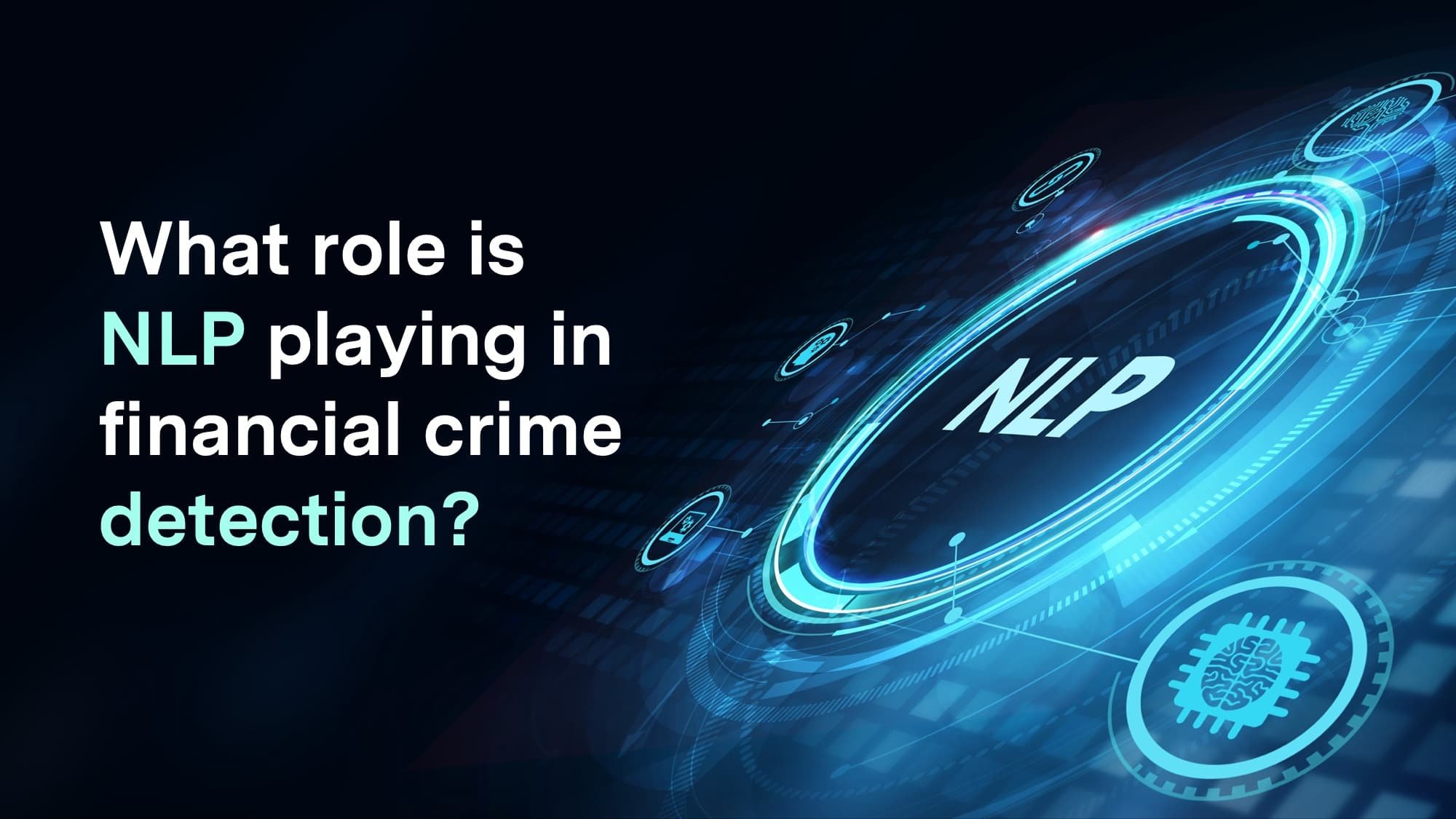What role is NLP playing in financial crime detection?
The financial landscape is a battlefield, where audacious criminals clash with vigilant institutions. In this arena, brute force tactics fall short – mere keyword searches leave hidden threats lurking in the shadows. Enter Natural Language Processing (NLP), a silent hero wielding the power of language to illuminate the darkest corners of financial crime.
NLP is an AI-driven tool that leverages advanced language analysis to identify patterns, sentiments, and risks within unstructured data, providing a nuanced and effective approach to detecting and mitigating financial threats.
Beyond Brute Force: NLP as a Surgical Scalpel
Traditionally, financial crime detection relied on keyword matching, a blunt instrument that often missed the subtle nuances of language. Imagine sifting through thousands of customer complaints, relying solely on keywords like "fraud" or "scam." You'd likely miss the desperate pleas for help hidden within, the inconsistencies in narratives, or the frantic urgency signalling potential money laundering. This is where NLP steps in, offering a surgical scalpel for dissecting the complexities of human communication.
NLP delves deeper into unstructured data like emails, chat logs, and social media posts, understanding the context and relationships between words. It can identify suspicious patterns invisible to the naked eye, like a customer with inconsistent income suddenly seeking a large loan, or an employee discussing "confidential investments" in panicked emails. By unearthing these hidden connections, NLP empowers investigators to prioritise threats and prevent potential disasters before they unfold.
Sentiment: The Emotional Fingerprint of Crime
Financial criminals aren't robots. They leave emotional footprints in their communication – fear, desperation, or even the tell-tale thrill of illicit gains. NLP can analyse the sentiment of text data, painting a vivid picture of the author's state of mind. A desperate customer seeking a quick loan might use frantic language and hyperbolic promises, raising red flags for potential fraud. Similarly, an employee discussing an insider trading scheme might betray nervous excitement in their emails, prompting closer scrutiny. By understanding the emotional undercurrents of communication, NLP helps financial institutions identify and prioritise potential threats, focusing resources on the most urgent cases.
Risk Rating: From Binary to Spectrum
The traditional binary approach to risk scoring – high risk or low risk – often fails to capture the nuances of financial crime. A loan application flagged for high risk due to income inconsistencies might be reassessed as lower risk if further analysis reveals a recent inheritance. Similarly, a seemingly innocuous customer interaction might be deemed high risk if NLP detects connections to sanctioned individuals or known criminal networks. This dynamic risk assessment enables financial institutions to tailor their responses, prioritising investigations for high-risk situations while minimising disruptions for legitimate transactions.
The Future of NLP: Evolving Vigilance
As NLP technology evolves, its impact on financial crime detection will become even more profound. Advanced models are being trained on real-world financial crime data, allowing them to identify increasingly sophisticated patterns and emerging threats. Furthermore, the integration of NLP with other AI technologies like machine learning and deep learning is creating powerful synergies, leading to the development of autonomous systems that can proactively detect and prevent financial crime in real-time. Imagine analysing voice data to identify suspicious phone calls or automatically flagging fake news articles used in pump-and-dump schemes. The future of NLP promises a vigilant guardian, constantly learning and adapting to safeguard the financial landscape.
To effectively cover different areas, it's essential to use different NLP variants and elements that are optimised for specific requirements. For example, similarity recognition or finding relevant documents in relation to a risk question.
Conclusion: A Powerful Ally in the Fight for Financial Security
In the ever-evolving world of financial crime, NLP is not just a tool; it's a powerful ally. By providing better search results, analysing sentiment, and dynamically assessing risk, NLP empowers financial institutions to navigate the treacherous waters of fraud and money laundering with greater confidence. As technology continues to advance, NLP will undoubtedly play a critical role in shaping a safer and more secure financial future for all, not only protecting reputations and finances, but also safeguarding the trust that underpins our global economy.

